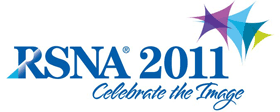
Abstract Archives of the RSNA, 2011
SSA01-03
Reasons for Failed Cancer Detection in the ACRIN 6666 Screening Protocol: Mammography, US, and MRI
Scientific Formal (Paper) Presentations
Presented on November 27, 2011
Presented as part of SSA01: ISP: Breast Imaging (Ultrasound)
Wendie A. Berg MD, PhD, Presenter: Research grant, Naviscan, Inc
Researcher, Naviscan, Inc
Speaker, SuperSonic Imagine
Researcher, SuperSonic Imagine
Medical Advisory Board, Koninklijke Philips Electronics NV
Author, Gamma Medica Ideas,
License, Merge Healthcare
Ellen Bachman Mendelson MD, Abstract Co-Author: Scientific Advisory Board, Hologic, Inc
Research support, Siemens AG
Speakers Bureau, Siemens AG
Medical Advisory Board, Quantason, LLC
Consultant, Quantason, LLC
Speakers Bureau, SuperSonic Imagine
Research support, SuperSonic Imagine
Medical Advisory Board, Toshiba Corporation
H. Carisa Le-Petross MD, Abstract Co-Author: Nothing to Disclose
Zheng Zhang PhD, Abstract Co-Author: Nothing to Disclose
Helga Marques MS, Abstract Co-Author: Nothing to Disclose
Amanda Adams MPH, Abstract Co-Author: Nothing to Disclose
To determine sources of false negative mammography, sonography (US), and MRI in the ACRIN 6666 protocol; in particular we sought to determine whether primary factors were lack of depiction or errors in interpretation.
Three experienced breast imaging radiologists independently reviewed breast imaging performed the year prior to and year of diagnosis for each of 130 malignant lesions (110 women) in the 21-site ACRIN 6666 protocol (100 invasive, median size 10.0 mm) of screening US. After initial review blinded to other imaging and pathology, observers reviewed pathologic findings and recorded imaging findings evident only in retrospect. Factors affecting lesion detection were recorded, including: technical (outside FOV, poor soft tissue contrast, motion, other), detection (“busy breasts”, poor lesion to background contrast, seen on only one view, difficult location, large breast), and interpretation issues (looks benign, multiple similar findings, at scar, very subtle). Results were compared to initial site interpretations.
For 67/130 (52%) malignancies missed by mammography, 16 were evident on prospective review (5 masses, 7 calcifications, 2 calcified masses, 1 suspicious node, 1 asymmetry/distortion), 3 seen only in retrospect (1 calcifications and 2 asymmetries), and 48 not depicted; 5/19 were also seen on prior year mammogram. Initial mammographic (overlapping) errors were: 7 technical, 13 detection, 7 interpretation issues. For 71/130 (55%) malignancies missed by initial ultrasound, 14 were evident prospectively, 1 only retrospectively, and 56 not depicted; 2/15 were depicted on prior year US. Initial US (overlapping) errors were: 6 technical, 8 detection, 9 interpretation factors. Targeted US depicted another 10/71 (14%) malignancies (2 not within initial FOV). Of 19 cancers imaged by MRI, 5 (26%) were missed on initial site interpretation. Of those 5, 1 (20%) mass was seen on prospective review (interpretive error), none in retrospect, and 4 not depicted.
28% (19/67) mammographically missed cancers were interpretive errors as were 21% (15/71) sonographically missed cancers and 20% (1/5) MRI misses. Another 14% (10/71) missed cancers were seen on targeted US. (Funded by The Avon Foundation and grants CA 80098 and CA 79778 from the National Cancer Institute)
Errors in interpretation of screening US were similar in prevalence (21% of misses) to errors in mammographic and MRI interpretation. Automated scanning and computer-assisted detection and diagnosis
Berg, W,
Mendelson, E,
Le-Petross, H,
Zhang, Z,
Marques, H,
Adams, A,
Reasons for Failed Cancer Detection in the ACRIN 6666 Screening Protocol: Mammography, US, and MRI. Radiological Society of North America 2011 Scientific Assembly and Annual Meeting, November 26 - December 2, 2011 ,Chicago IL.
http://archive.rsna.org/2011/11006596.html

